18 Wild Animals in Burkina Faso [Wildlife in Burkina Faso]
Want to know more about the wildlife in Burkina Faso?
Discover 18 wild animals in Burkina Faso in this post, as well as interesting facts about them. 🇧🇫
Learn All About Burkinese Animals
Ready to learn all about Burkinese animals?
I’ve always been fascinated by animals, and by how they can be so different from one country to another. In this guide, we’ll focus on the many animals Burkina Faso has on the land, in the sky, and underwater.
I’ve split the guide into 4 categories:
- Native animals from Burkina Faso
- Endangered animals of Burkina Faso
- What is Burkina Faso national animal?
- How many animals native to Burkina Faso?
Let’s dive in right away with our first category!
Native Animals from Burkina Faso
Burkina Faso is a landlocked African country located in the northeastern part of the continent, below the Sahara. Though French is its official language, only 15 percent of the population speaks it. It is bordered by Niger, Mali, Benin, Togo, Ghana, and the Ivory Coast, and its capital city is Ouagadougou, which counts more than 2,453,000 inhabitants (but more than 3,032,000 if you include the metropolitan area).
An interesting part of the country that I wanted to tackle is its wildlife. In light of that, I have listed the best of it, and I hope you will love learning what animals live in Burkina Faso.
Here’s the Burkina Faso animals list.
1. Water chevrotain
- Name: Water chevrotain
- Scientific name: Hyemoschus aquaticus
- Conservation status:
The water chevrotain, also known as the fanged deer, is a species of ruminant native to tropical Africa. It can mostly be found in the central and western parts of the continent and is the largest of the 10 species of chevrotains. These animals are barely bigger than small dogs, though they are similar to deer.
It is an exclusively nocturnal animal that feeds on fruits, though it was seen eating crabs, insects, and scavenged meat.
2. Serval
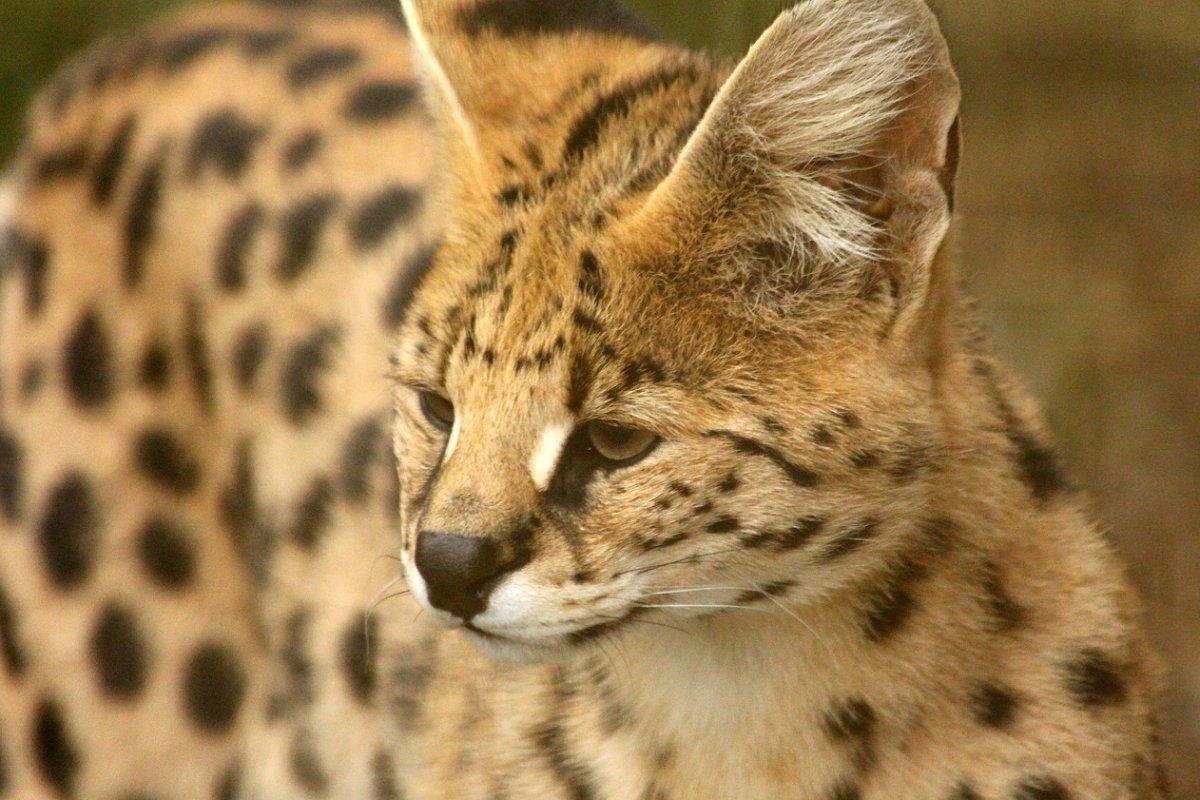
- Name: Serval
- Scientific name: Leptailurus serval
- Conservation status:
The serval is a species of wild cat native to Africa. It lives in most of sub-Saharan Africa, from northwestern countries like Burkina Faso to South Africa. Apart from rainforest regions, it is seen everywhere, usually in protected areas. It likes savannas and cork oak forests.
This wild cat is solitary and carnivore and is active both by day and at night. Its diet is majorly made of rodents, small birds, insects, and reptiles. It has a particularly good sense of hearing it uses to locate prey.
3. West African slender-snouted crocodile
- Name: West African slender-snouted crocodile
- Scientific name: Mecistops cataphractus
- Conservation status:
The West African slender-snouted crocodile is one of two species of slender-snouted crocodiles, the other being found in Central Africa. It is also one of five species of crocodile in Africa.
Sadly, this crocodile is critically endangered and was completely extirpated from several countries. In other areas, it is on the verge of extinction, and its global population is seriously declining. Captive breeding may be a solution to save this species, but it is poorly known and studied.
4. Beaudouin’s snake eagle
- Name: Beaudouin’s snake eagle
- Scientific name: Circaetus beaudouini
- Conservation status:
Beaudouin’s snake eagle is a species of snake eagle native to the Sahel region, in West Africa. It is considered a vulnerable eagle, and its global population is on the decline, mostly due to the rising human populations in the Sahel regions. An estimated 3,500 to 15,000 individuals are thought to be in the wild right now.
It lives in wooded savanna and other open woodlands, and hunts from a perch.
5. Northwest African cheetah
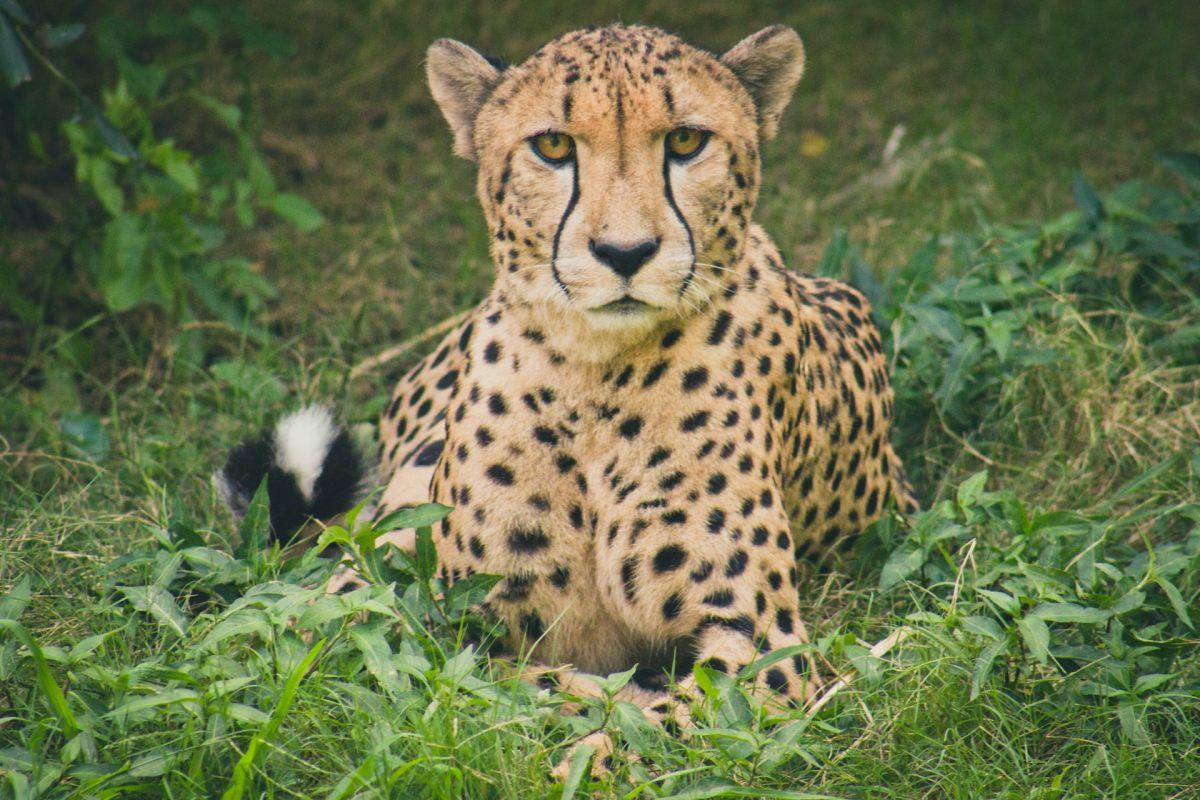
- Name: Northwest African cheetah
- Scientific name: Acinonyx jubatus hecki
- Conservation status:
The Northwest African cheetah, also known as the Sahara cheetah, is a critically endangered species of cheetah native to the Sahara and the Sahel. Compared to other African cheetahs, it has a shorter coat and a whiter color. It also has no spots on the face, and it is overall smaller.
These cheetahs are nocturnal, which is not very surprising considering the harsh climate of the Sahara, with a daytime temperature of more than 40 °C / 104 °F.
6. Spotted-necked otter
- Name: Spotted-necked otter
- Scientific name: Hydrictis maculicollis
- Conservation status:
The spotted-necked otter, also known as the speckle-throated otter, is a species of otter native to sub-Saharan Africa. It can be found throughout most of the southern half of the continent, predominantly in the western countries.
These otters live in lakes and large rivers and they feed on fish. Their main predators are crocodiles and fish eagles, but their biggest threats are habitat destruction and pollution, which is why they are on the decline.
7. Striped polecat
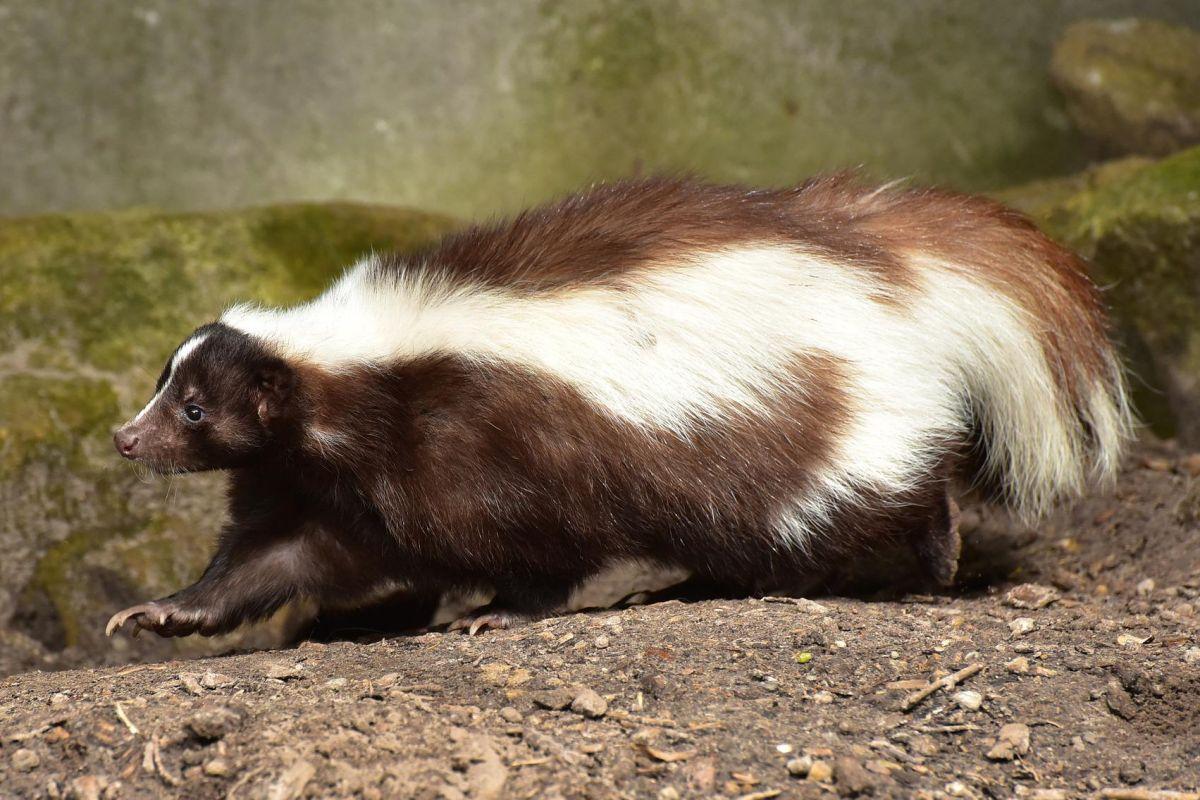
- Name: Striped polecat
- Scientific name: Ictonyx striatus
- Conservation status:
The striped polecat, also known as the African skunk, the zoril, the Cape polecat, or the zorilla, is a species of mustelid that looks like a skunk. Its other name zorilla comes from the Spanish word “zorro”, which means fox. It can be found in dry and arid areas, such as savannas.
These polecats are carnivores. Their diet is mostly made of small rodents, birds, snakes, insects, and amphibians, and their very sharp teeth are perfectly adapted to sheer flesh.
8. Hippopotamus
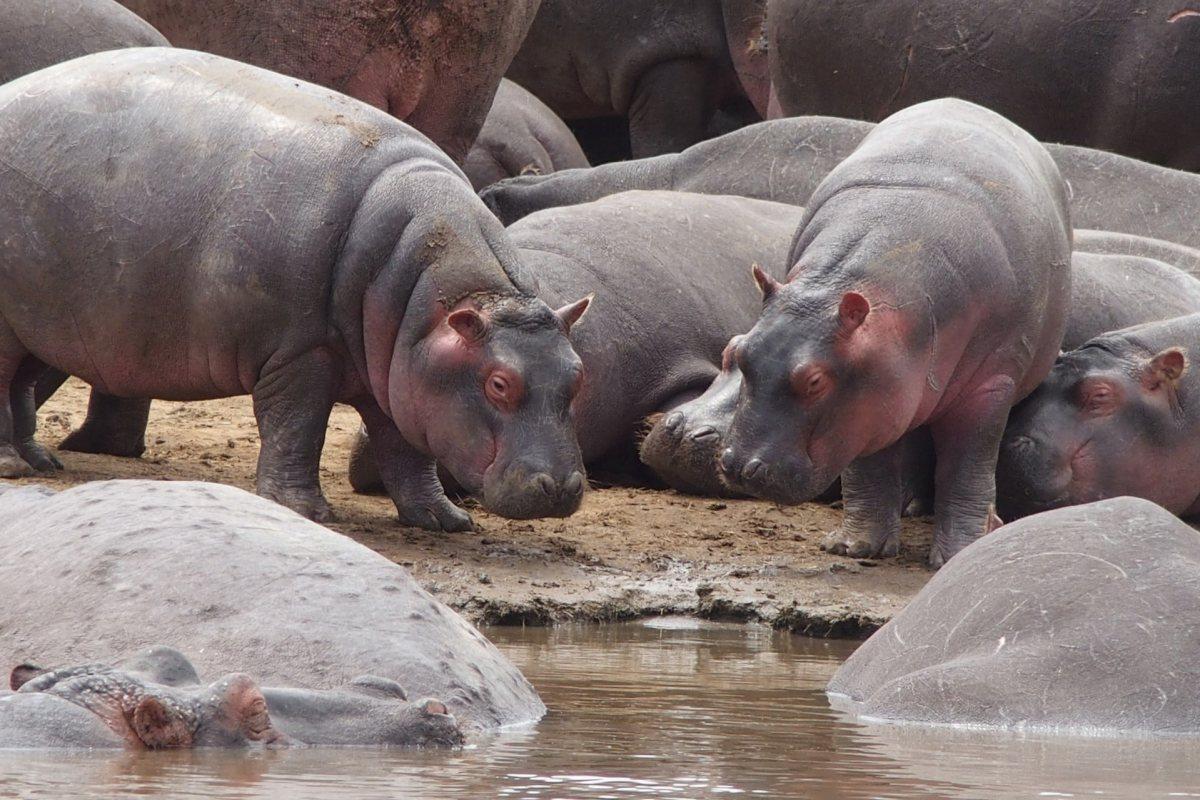
- Name: Hippopotamus
- Scientific name: Hippopotamus amphibius
- Conservation status:
The hippopotamus is one of the most famous large animals in Africa. It is herbivorous and semiaquatic and can be found throughout almost all of sub-Saharan Africa. It lives near bodies of freshwater and feeds on grass.
It is known for being one of the most unpredictable mammals, and a very aggressive animal. Because of this, it often charges and attacks boats, and can easily kill humans. It can also run extremely fast, making it one of the most dangerous large animals in Africa.
9. Great snipe
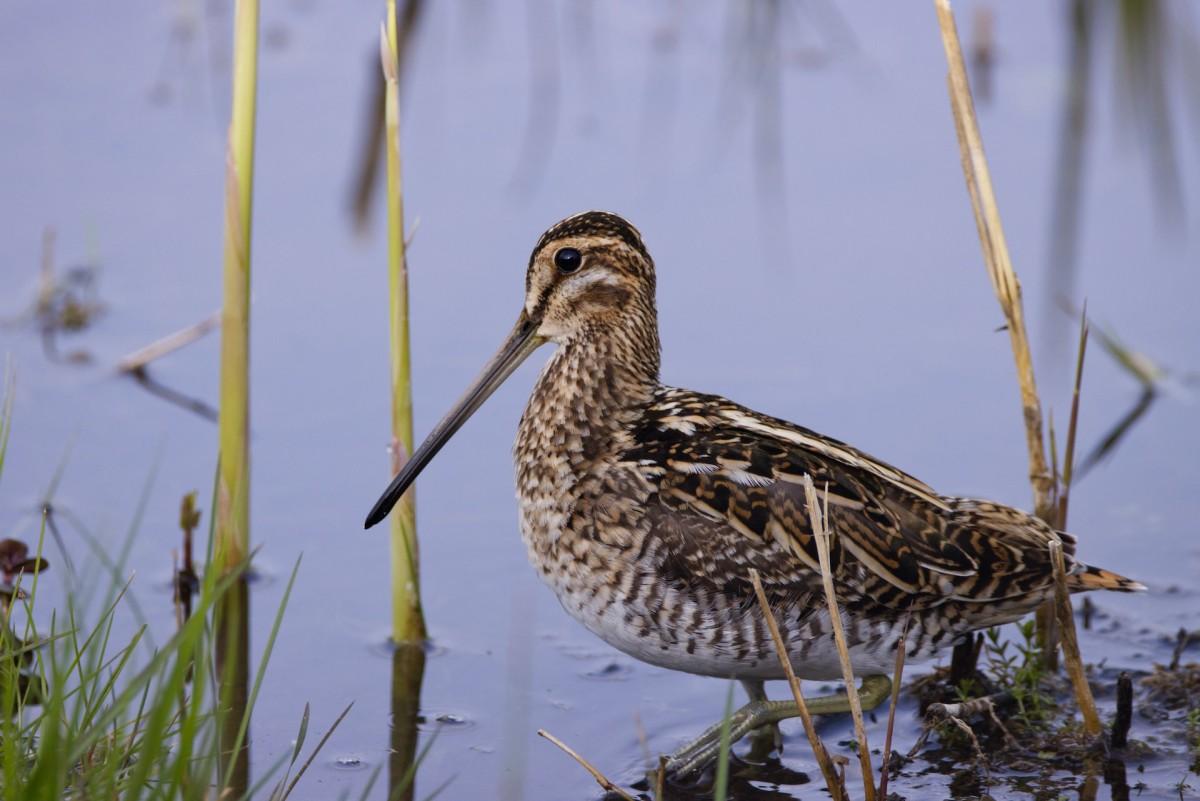
- Name: Great snipe
- Scientific name: Gallinago media
- Conservation status:
The great snipe is a small species of wader native to northeastern Europe. Why is it on this list then? Because, during winter, it migrates to almost all of sub-Saharan Africa.
This bird’s population is in steep decline due to hunting and habitat loss. It is known for being able to fly very fast (up to 97 km/h / 60 mph), without stopping, over huge distances. Their diet is made of earthworms and insects, as well as some plants.
10. African bush elephant
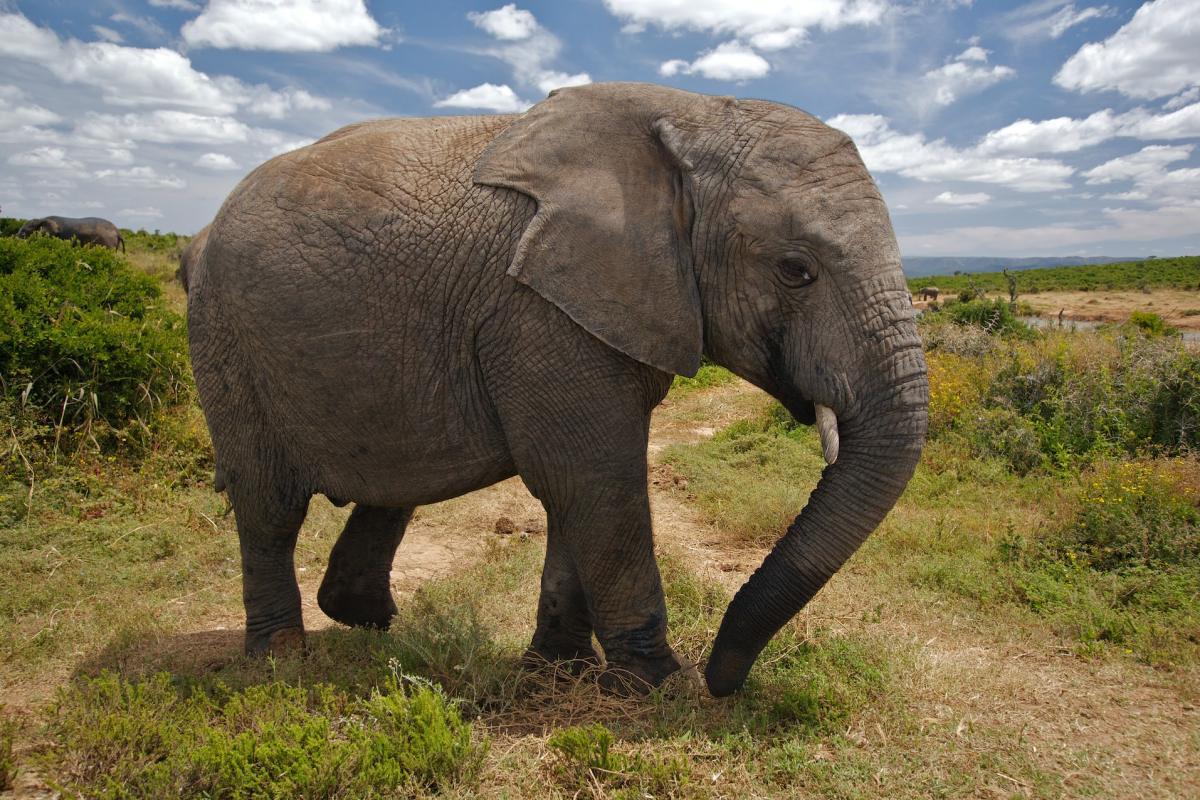
- Name: African bush elephant
- Scientific name: Loxodonta africana
- Conservation status:
The African bush elephant, also known as the African savanna elephant, is one of two living African elephant species. It is famous worldwide for being the largest living terrestrial animal: it can reach up to 3.96 m / 13 ft in shoulder height, and weigh up to 10.4 t / 11.5 short tons.
This species of elephant can be found in 37 African countries, and it inhabits woodlands, agricultural land, and wetlands. Sadly, it is seriously threatened by habitat destruction and poaching.
11. Chimpanzee

- Name: Chimpanzee
- Scientific name: Pan troglodytes
- Conservation status:
The chimpanzee, also known as the chimp, is a species of great ape native to tropical Africa. It can be found in forests and savannas. This ape lives in groups of up to 150 individuals, though it usually prefers smaller groups of around 10 to 15 animals.
Like most apes, it lives in a male-dominated hierarchy, but disputes are usually settled without violence. It is one of the smartest species of monkeys, being able to use tools and modify sticks and rocks to hunt and find honey, ants, nuts, and water.
12. Oribi
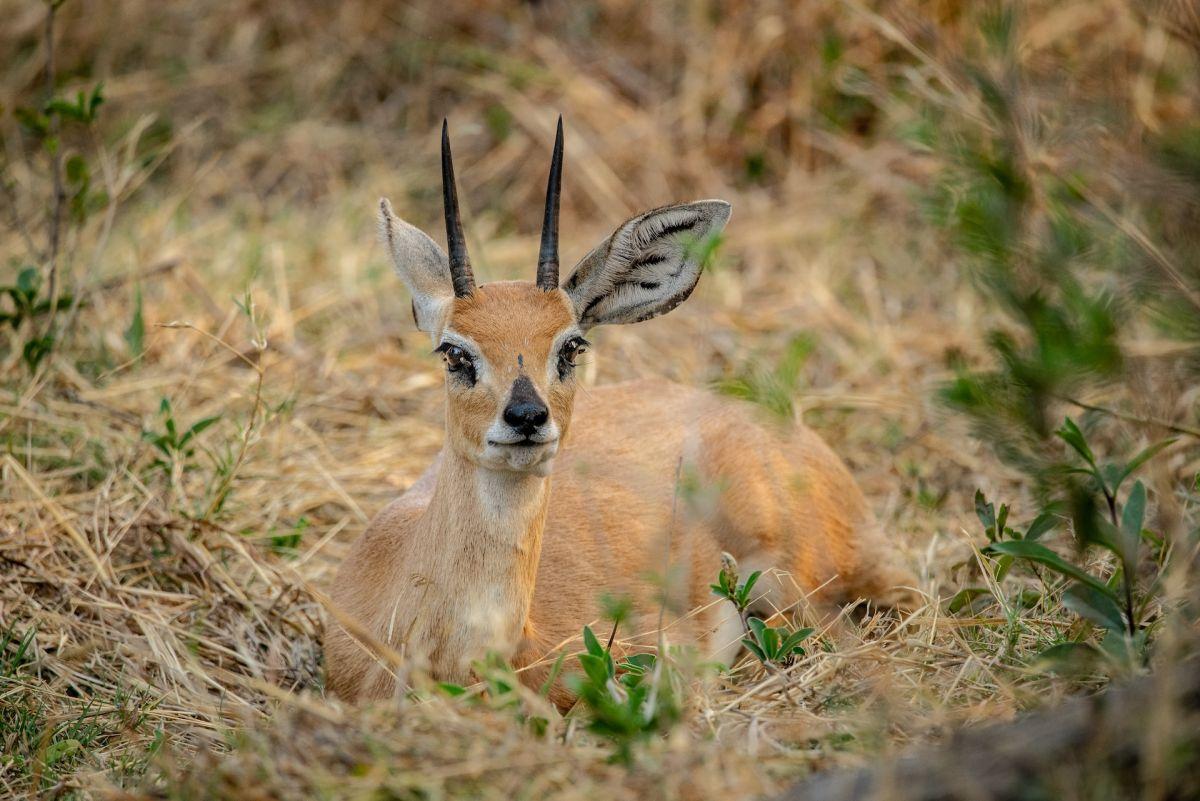
- Name: Oribi
- Scientific name: Ourebia ourebi
- Conservation status:
The oribi is a small species of antelope native to eastern, western, and southern Africa. It is the only member of its genus and is active by day.
Usually, it lives in small herds of around 4 members and feeds on fresh grasses. It inhabits a variety of areas, such as tropical grasslands and savannas. Only male oribis have horns, which are thin and straight. There are currently around 750,000 individuals in the wild.
13. West African giraffe
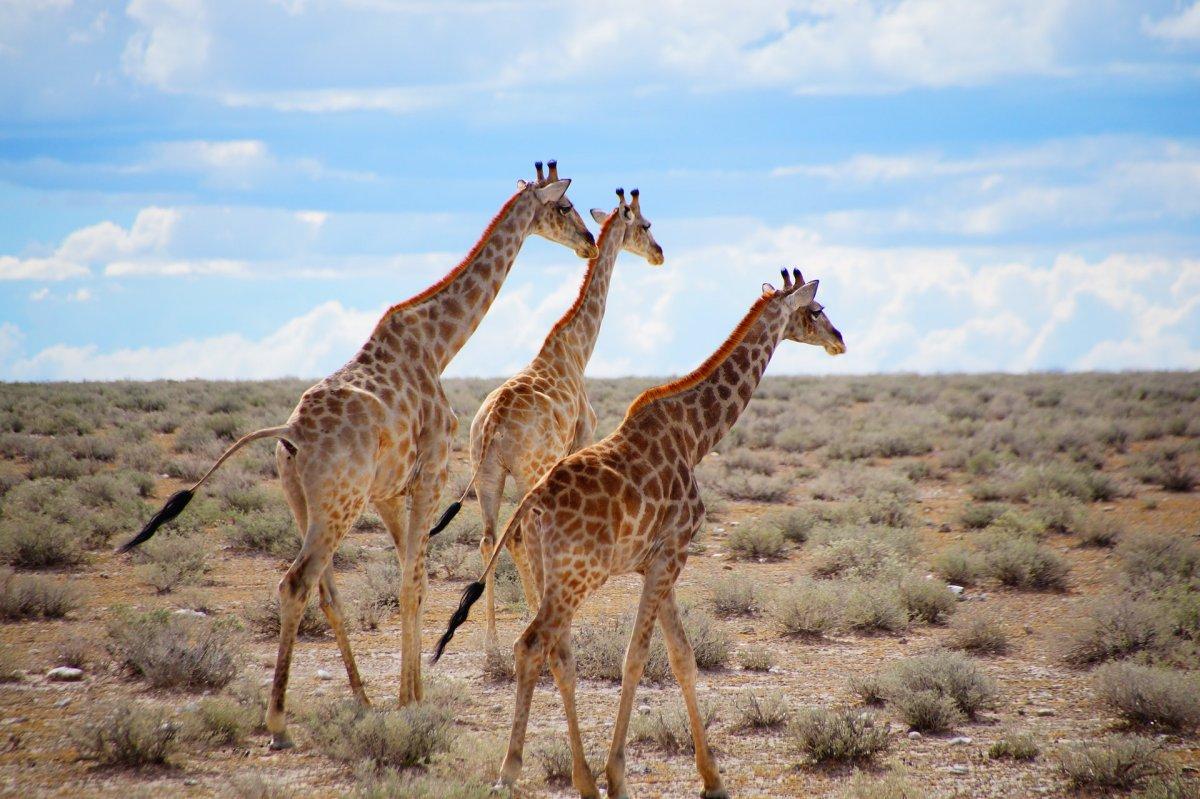
- Name: West African giraffe
- Scientific name: Giraffa camelopardalis peralta
- Conservation status:
The West African giraffe, also known as the Niger giraffe, is a species of giraffe native to the Sahel region in West Africa. It has light-colored spots, and there are only around 400 individuals in total, which is why it is considered vulnerable. Its range drastically declined and is now closely protected and monitored.
Its diet is mostly made of leaves. Most captive West African giraffes are found in French zoos because of French heavy colonialism in these countries.
14. Rusty-spotted genet
- Name: Rusty-spotted genet
- Scientific name: Genetta maculata
- Conservation status:
The rusty-spotted genet, also known as the panther genet or the large-spotted genet, is a species of genet native to sub-Saharan Africa. It is an omnivorous animal that feeds on rodents like rats, shrews, and mice, but also spiders, eggs, fruits, seeds, and berries.
Its fur is whitish gray to yellow, with dark spots and a long continuous dark line across its back. Its feet are also of the same color.
15. Egyptian wolf
- Name: Egyptian wolf
- Scientific name: Canis lupaster lupaster
- Conservation status:
The Egyptian wolf is a species of African wolf native to the western, eastern, and northern parts of the continent. It has a heavy build, a wide head, and rounded ears. It can be found in numerous habitats, such as coastal and hilly areas, but also tropical or semi-arid zones.
The Egyptian god Anubis might have been inspired by the Egyptian wolf. Their heads look very similar, even though the golden jackal was thought to be the origin of the god.
16. Olive baboon
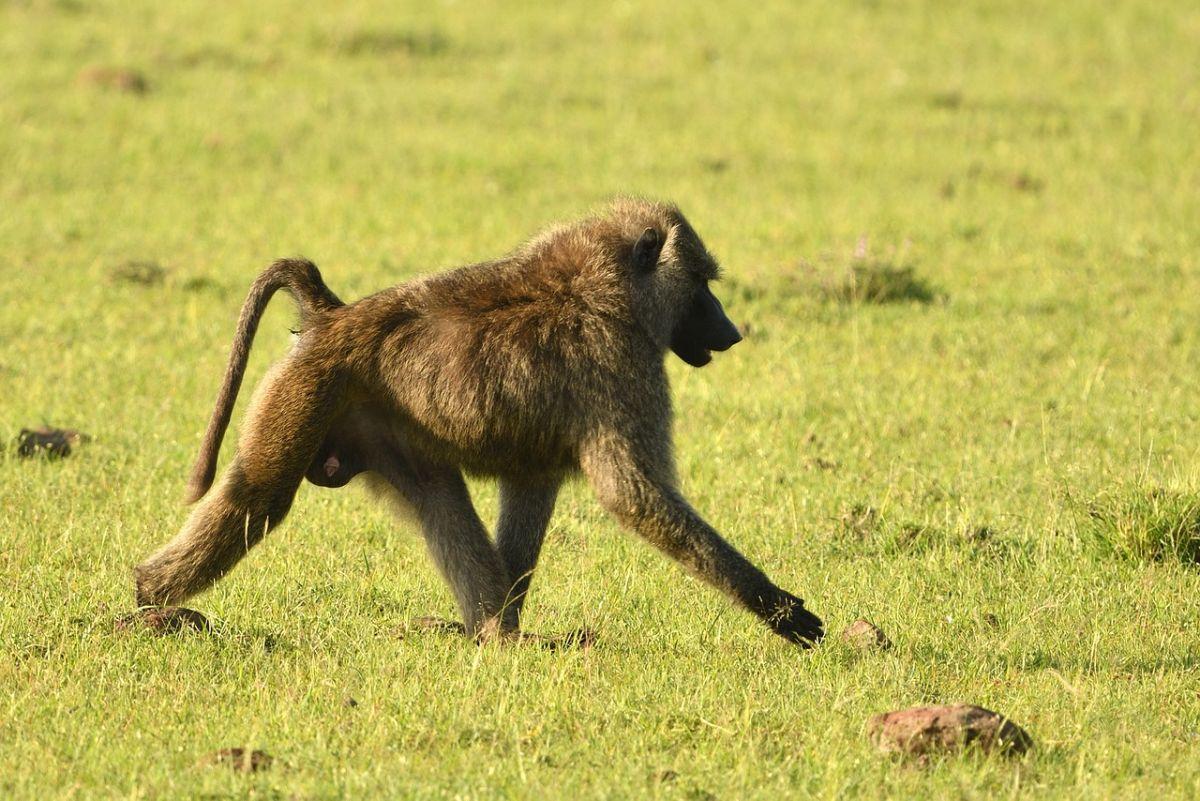
- Name: Olive baboon
- Scientific name: Papio anubis
- Conservation status:
The olive baboon is a species of Old World monkey native to 25 countries of Central Africa, from Mali to Ethiopia. Funnily enough, we just talked about it, but its other name is the Anubis monkey.
This primate lives in large groups of 15 to 150 individuals, with a few males, a lot of females, and all their offspring. Most of the time, groups stay together, but they can split up if they compete for too many resources.
17. Aardvark
- Name: Aardvark
- Scientific name: Orycteropus afer
- Conservation status:
The aardvark might be an animal you have never heard of. It is a species of burrowing and nocturnal mammal native to all of sub-Saharan Africa. It is an insectivore with a long pig-like snout it uses to sniff out food.
Its diet is mostly made of ants and termites, which it digs out of its hills with its sharp claws and powerful legs. Its main problem is finding food. Because it needs such a specific diet, its global population is thought to be on the decline.
18. African leopard
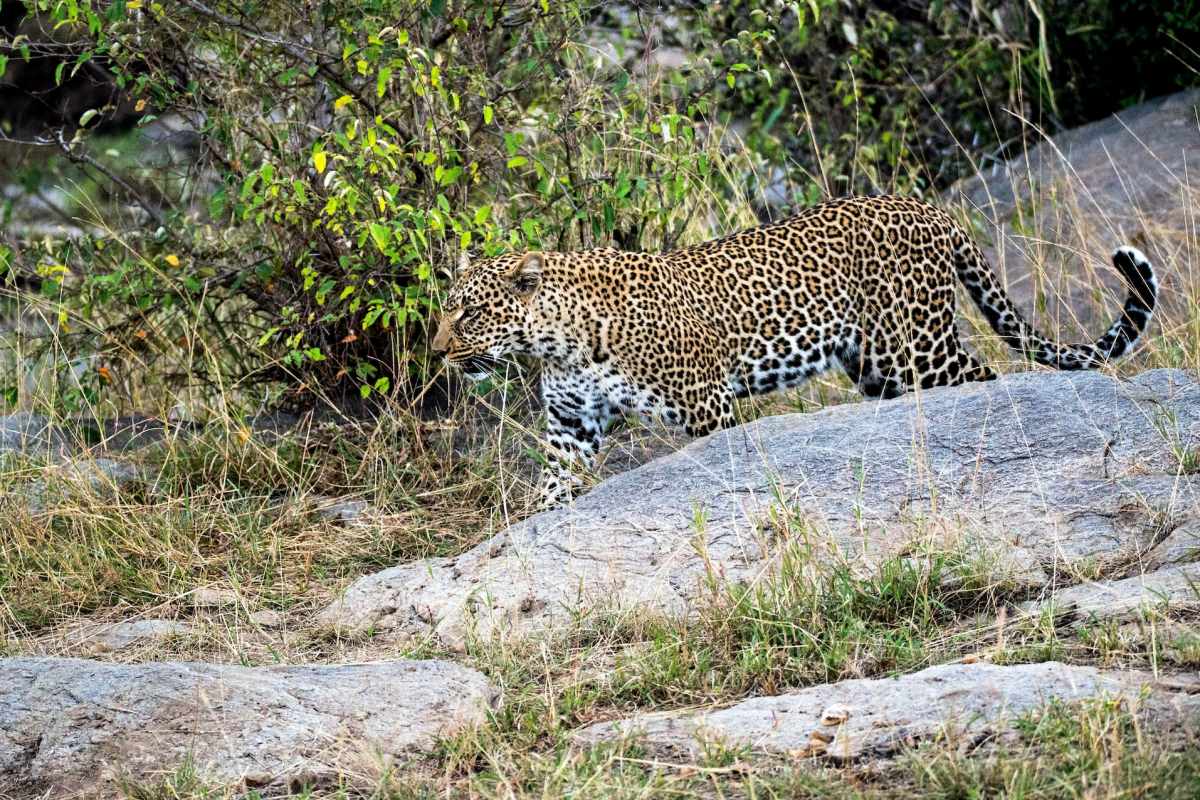
- Name: African leopard
- Scientific name: Panthera pardus pardus
- Conservation status:
The African leopard is also a very iconic wild animal of Africa. It inhabits most of sub-Saharan Africa, though its historical range has been fragmented over the past decades. Some individuals were also seen in North Africa.
The biggest threat to this large wild cat is intense persecution for attacking livestock as well as habitat conversion and loss. The impact of trophy hunting and poaching is not precisely known, but it must have a negative impact, especially when females are shot.
—
So there you have them, these were my 18 wild animals in Burkina Faso. I hope you enjoyed this list and that you learned something new today.
In case you want to learn more about Burkina Faso wildlife, feel free to keep reading, as I still have lots of things to tell you about:
Endangered Animals of Burkina Faso
This is definitely the saddest part of the list, but it is very important to raise awareness. Because of this, let’s go through the list of endangered animals in Burkina Faso.
Here are the animals in danger of extinction in Burkina Faso.
- Scimitar-horned oryx
- Slender-snouted crocodile
- Black rhino
- Hooded vulture
- White-backed vulture
- African forest elephant
- and 4 more…
- African spurred tortoise
- Chimpanzee
- Lappet-faced vulture
- Secretarybird
- African savanna elephant
- and 9 more…
To see the full list of endangered species in Burkina Faso, head over to the International Union for Conservation of Nature’s Red List.
What is the National Animal of Burkina Faso?
The national animal of Burkina Faso is the stallion.
A stallion is a male horse that was not castrated. Due to the testosterone, it has a thicker neck and a different temperament. It is a social animal that lives in herds. However, contrary to popular myths, stallions do not fight to the death in competition for mares, and they do not live in a harem of mares.
There are lots of species of stallions, but the national animal of Burkina Faso is the white stallion. It is a symbol of power, freedom, and hope.
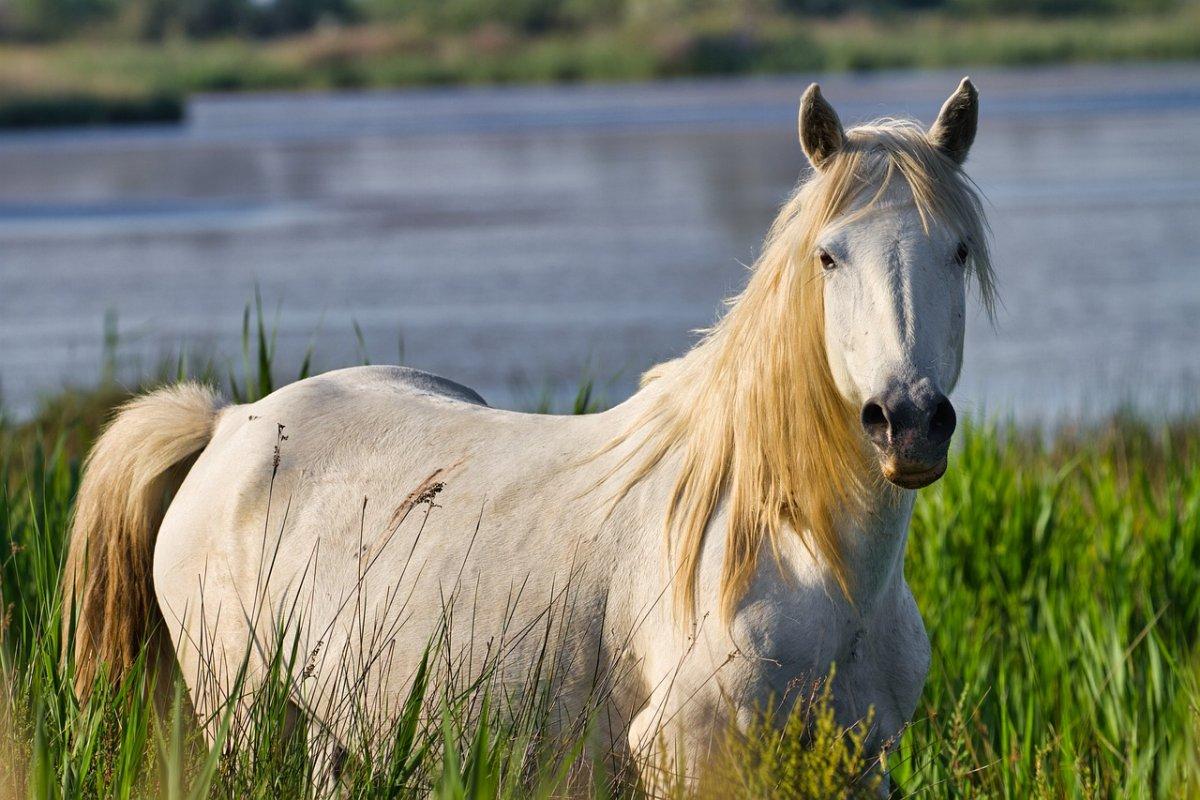
How Many Animals Native to Burkina Faso?
What is the diversity of native animals in Burkina Faso?
Let’s look at the total number of species of Chordata (mammals, birds, fishes, and reptiles).
Total number of animal species in Burkina Faso: 879 (14,205 in total in sub-Saharan Africa)
More About Animals in the World!
Loved these Burkina Faso animal facts? Want to see what animals live in other countries?
Then check out these posts:
Or click here to see ALL the facts up on the blog! Spoiler alert: there’s A LOT of them.
Share the knowledge! Click on the buttons below to share information about these famous animals in Burkina Faso with your friends, and help them learn more about the world 🙂
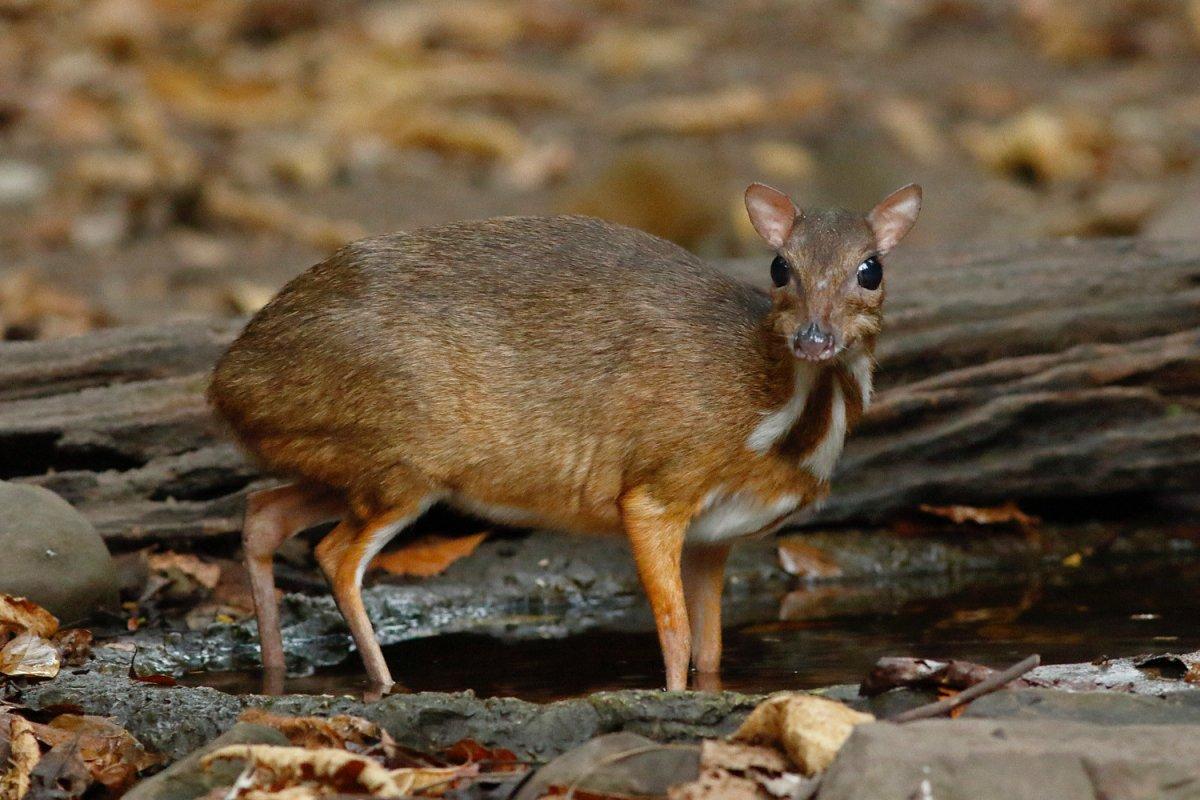
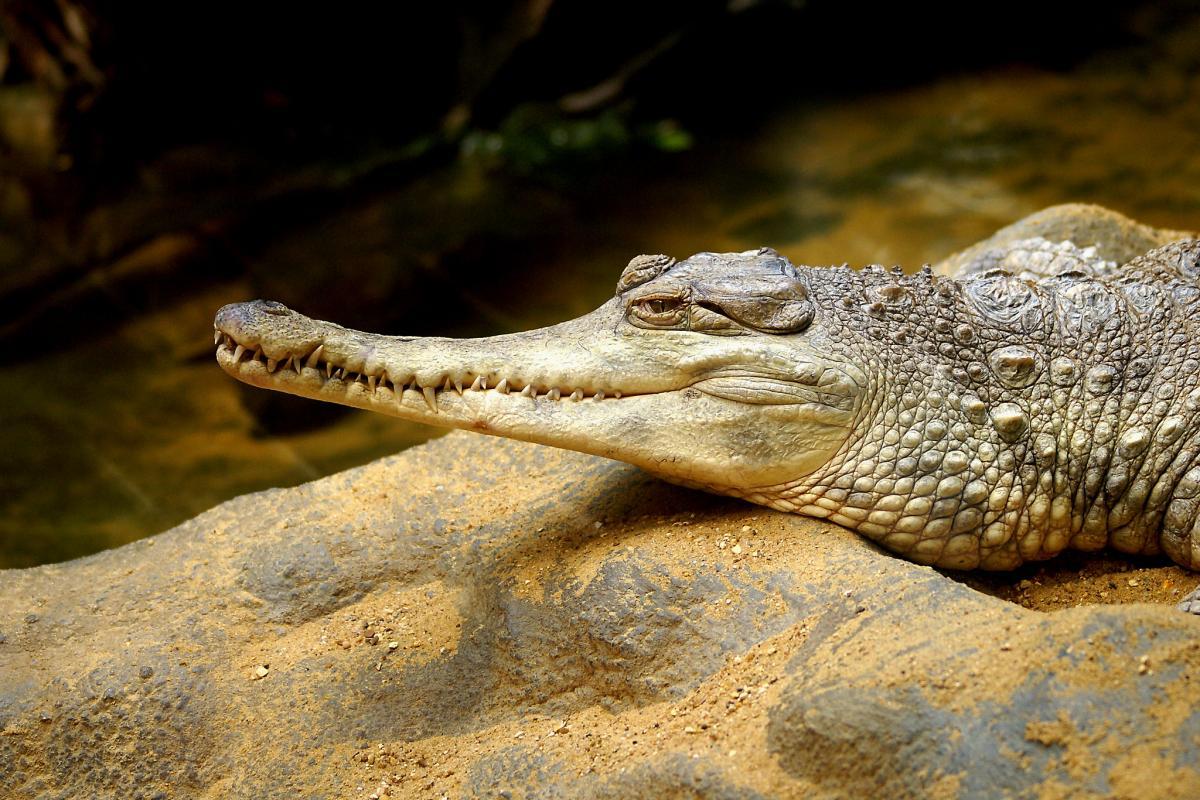
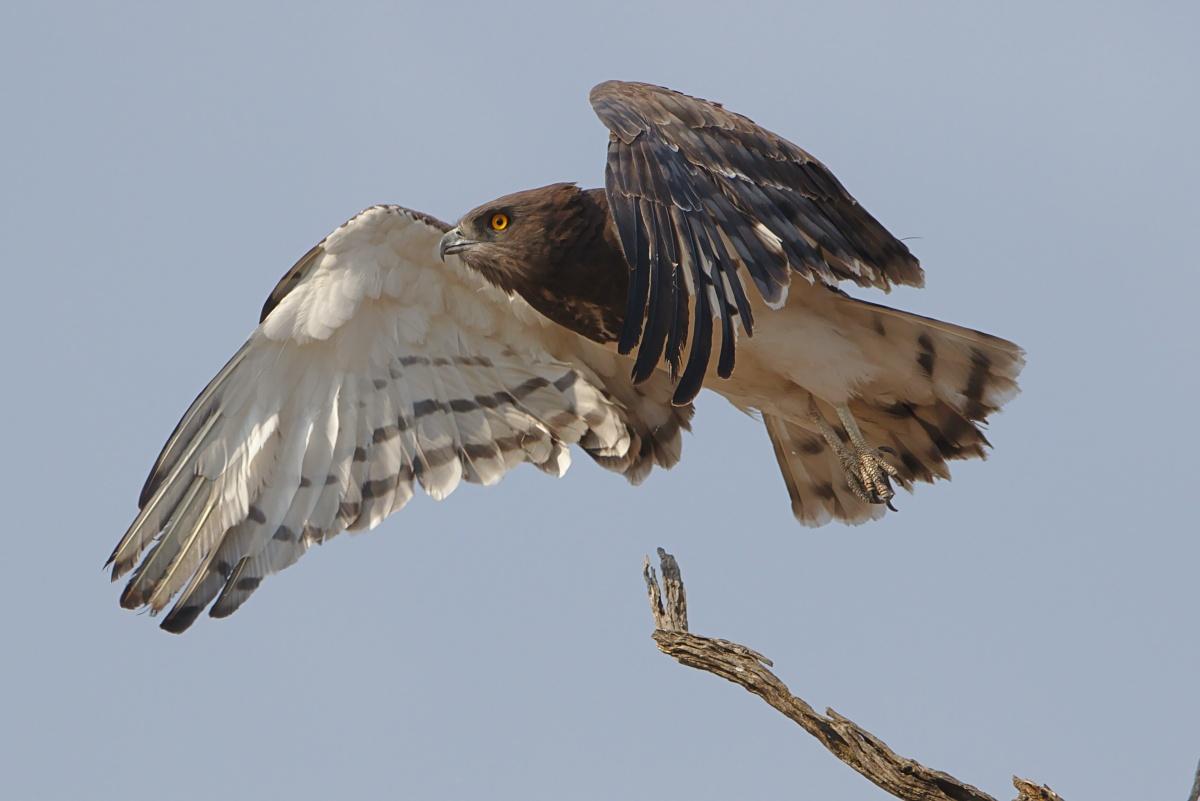
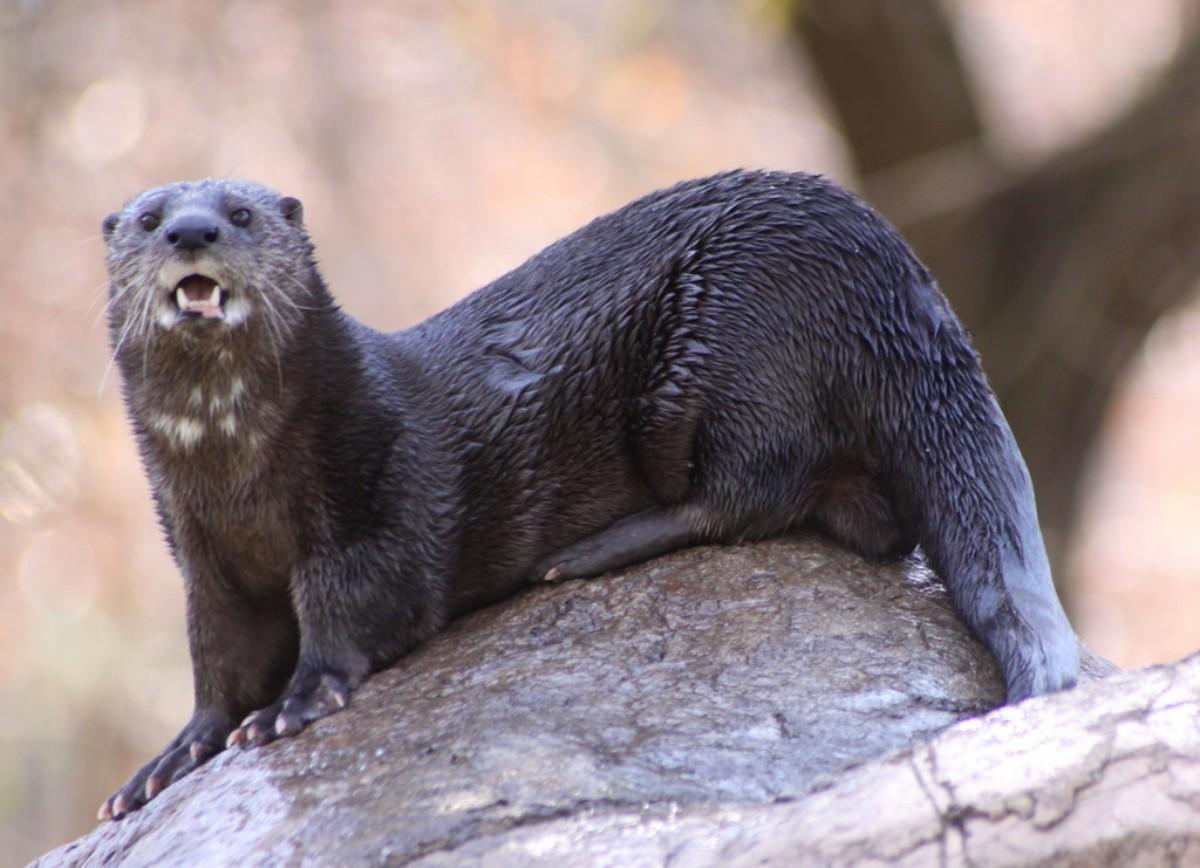
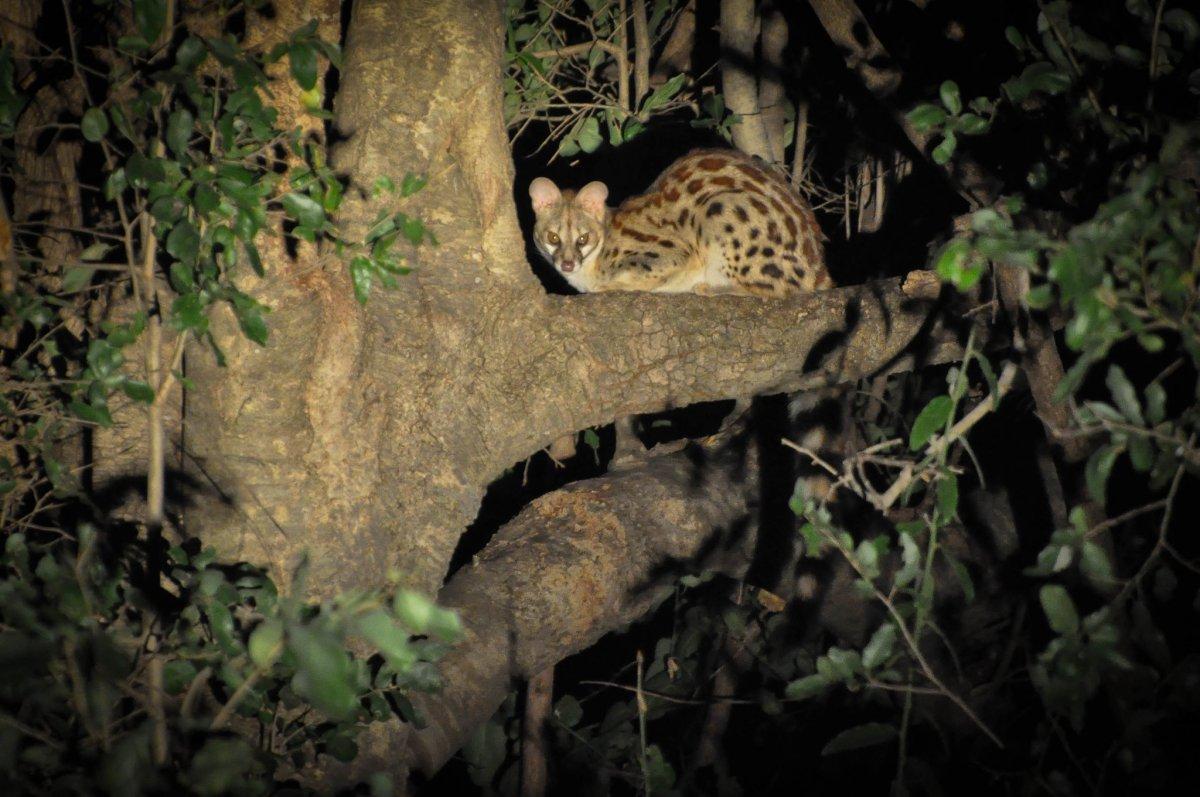
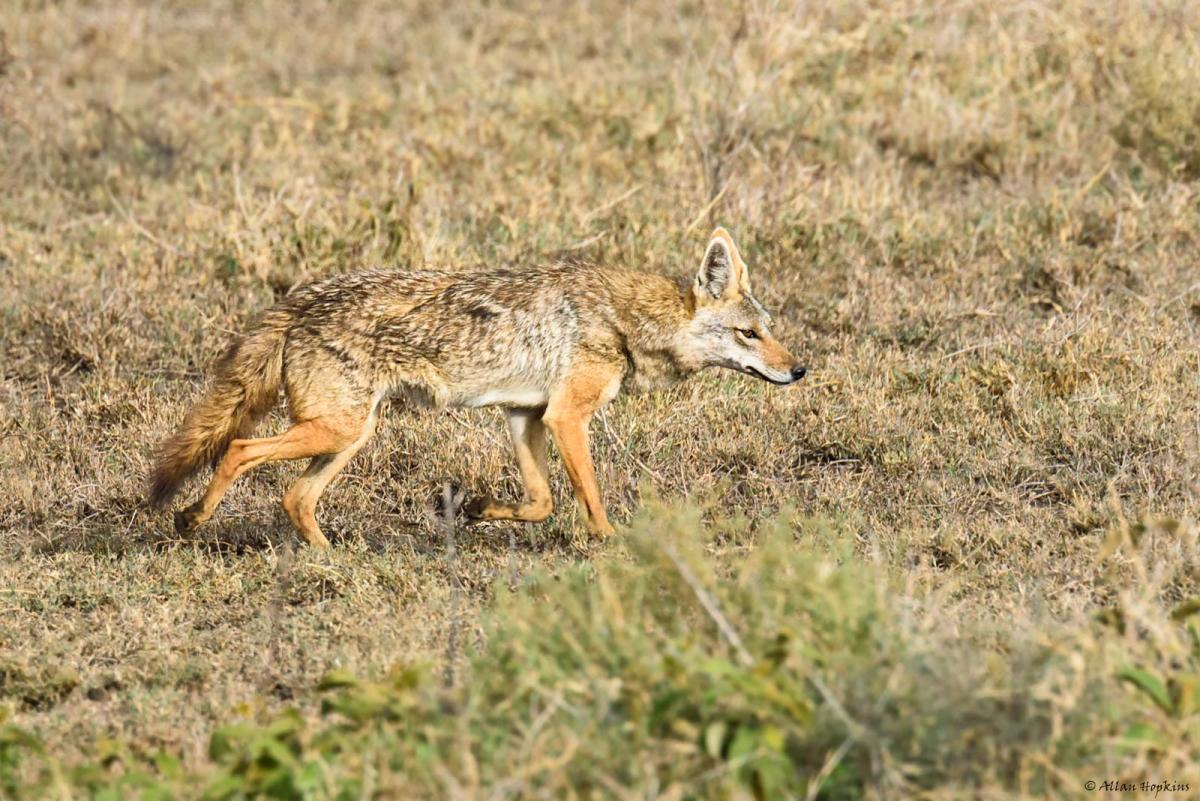
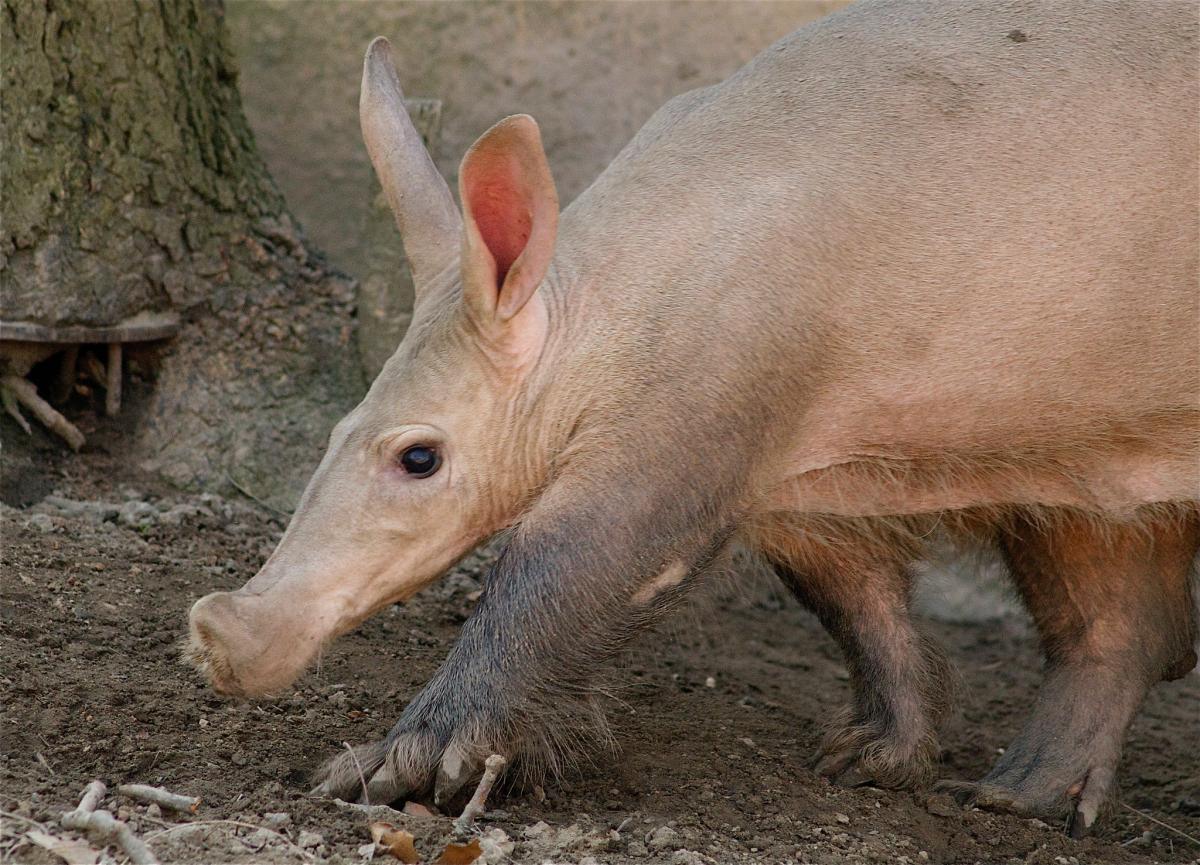

![15 Wild Animals in Barbados [Wildlife in Barbados]](https://www.kevmrc.com/wp-content/uploads/2022/08/15-wild-animals-in-barbados.jpg)
![28 Wild Animals in Central Africa [Wildlife in Central African Republic]](https://www.kevmrc.com/wp-content/uploads/2022/12/28-wild-animals-in-central-africa.jpg)
![15 Wild Animals in Ghana [Wildlife in Ghana]](https://www.kevmrc.com/wp-content/uploads/2022/12/15-wild-animals-in-ghana.jpg)